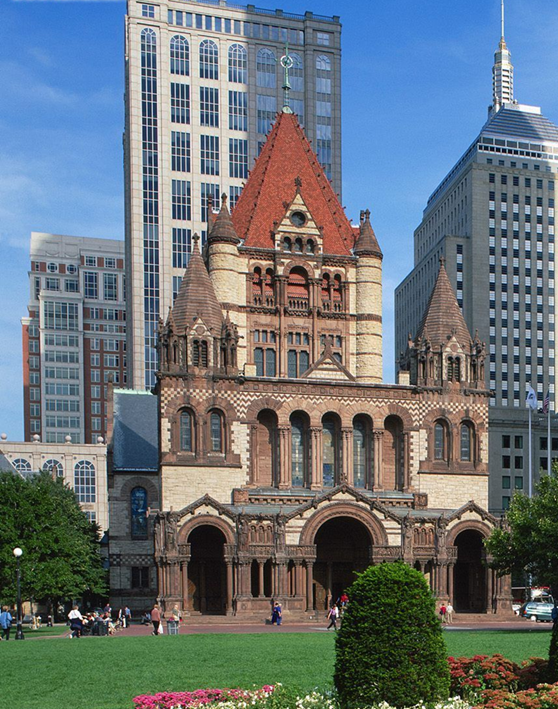Tour Description
You have probably passed Trinity Church in Copley Square scores of times, but have you ever thought of this building as being revolutionary?
In this 2-part series, explore with us how the building of Trinity Church in the mid-1870’s was indeed revolutionary and brought about a sea change in American architecture and the decoration of public buildings.
Wednesday, January 3rd: Trinity’s Architecture
The young, French-trained architect, Henry Hobson Richardson, threw aside the conventional and created a rational, honest, and monumental offering which became his signature style and became widely popular. Richardson drew inspiration from the 10th and 11th century Romanesque architecture of central France while at the same time remained focused on meeting the functional needs of the church and its new, Boston- born leader, Phillips Brooks.
Wednesday, January 10th: John La Farge’s Decorative Program
Working closely with Richardson and Brooks, John La Farge, the artist and decorator, created a unified and dynamic program of decorative painting which integrated with and enhanced Trinity Church’s architecture. His use of large-scale murals influenced how buildings were decorated for the next several generations. LaFarge also went on to change everything in the art of stained glass, leaving traditional medieval techniques and materials behind and creating an entirely new era in the medium.


